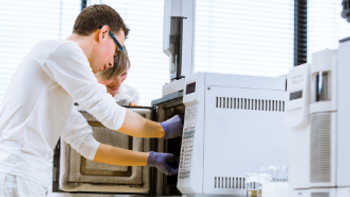
GC×GC–MS With Flame Ionization Aids AI Strategies for Raw Hazelnut Volatilome Evaluation
Quality control of raw hazelnuts is already a highly specific process, but has limitations including operator influence, duration, and lack of standardization. AI is now assisting in quality decision-making using GC×GC analysis.
Researchers in Italy have tested a platform that uses comprehensive two-dimensional gas chromatography and parallel detection by mass spectrometry and a flame ionization detector (GC×GC–MS/FID) to quantify the volatile compounds in raw hazelnuts, in the interest of developing artificial intelligence (AI) decision-making tools for industrial use (1). The method was preceded by a fully automated sample preparation using multiple headspace solid-phase microextraction (MHS-SPME).
Published in the Journal of Chromatography A, the study listed the shortcomings of current practices for quality control of raw hazelnuts in the food industry. Namely, visual and sensory inspection is a highly specific, specialized process, but engenders variables in human operation, length of time, and ease of standardization (1). AI is seen as a viable component of the researchers’ experiment because they said the GC×GC–MS/FID method, aided by MHS-SPME, has potential for compatibility with a sensomics-based expert system (SEBES), producing in effect, an AI-based “smelling machine” that quickly and efficiently screens for key odorants in food.
The volatilome, or sum of all volatile metabolites and volatile organic or inorganic compounds within an organism, of hazelnuts contains vital information about plant phenotype and secondary products from lipid oxidation (1). Native volatiles like terpenes and terpenoids, the researchers said, can inform the possible presence of bacteria or mold, while certain alcohols, fatty acids, and aldehydes detected can signal unpleasant aroma qualities or provide indications of shelf stability. The GC×GC–MS/FID process aims for efficient sensitivity and separation, and accurate resolution and quantification.
For the experiment, samples of hazelnuts were selected from industrial batches harvested from four distinct geographical and botanical regions. They were given differing post-harvesting treatments and stored at a variety of temperatures for a variety of lengths of time up to 12 months (1). GC×GC was coupled with a fast quadrupole MS detector with a high-efficiency source (HES) in electron ionization mode at 70 eV, with parallel detection achieved using the FID.
Even more than quantitative results, the researchers felt the success of their devised method lay in its ability to evaluate several disparate factors in a single analysis. Those included aroma “blueprint,” length of time for both storage and spoilage and product quality related to both, and even where the hazelnuts were harvested from (1). Further, they said, given fluctuations in both the geopolitical and actual climates, and trends in the food industry affecting hazelnuts’ market value, the information gleaned in this analysis could impact AI-guided decision-making about breeding strategies as crop availability changes, and warehousing and storage strategies.
Reference
(1) Squara, S.; Caratti, A.; Fina, A.; et al. Artificial Intelligence decision-making tools based on comprehensive two-dimensional gas chromatography data: the challenge of quantitative volatilomics in food quality assessment. J. Chromatogr. A 2023, 1700, 464041. DOI:
Newsletter
Join the global community of analytical scientists who trust LCGC for insights on the latest techniques, trends, and expert solutions in chromatography.




